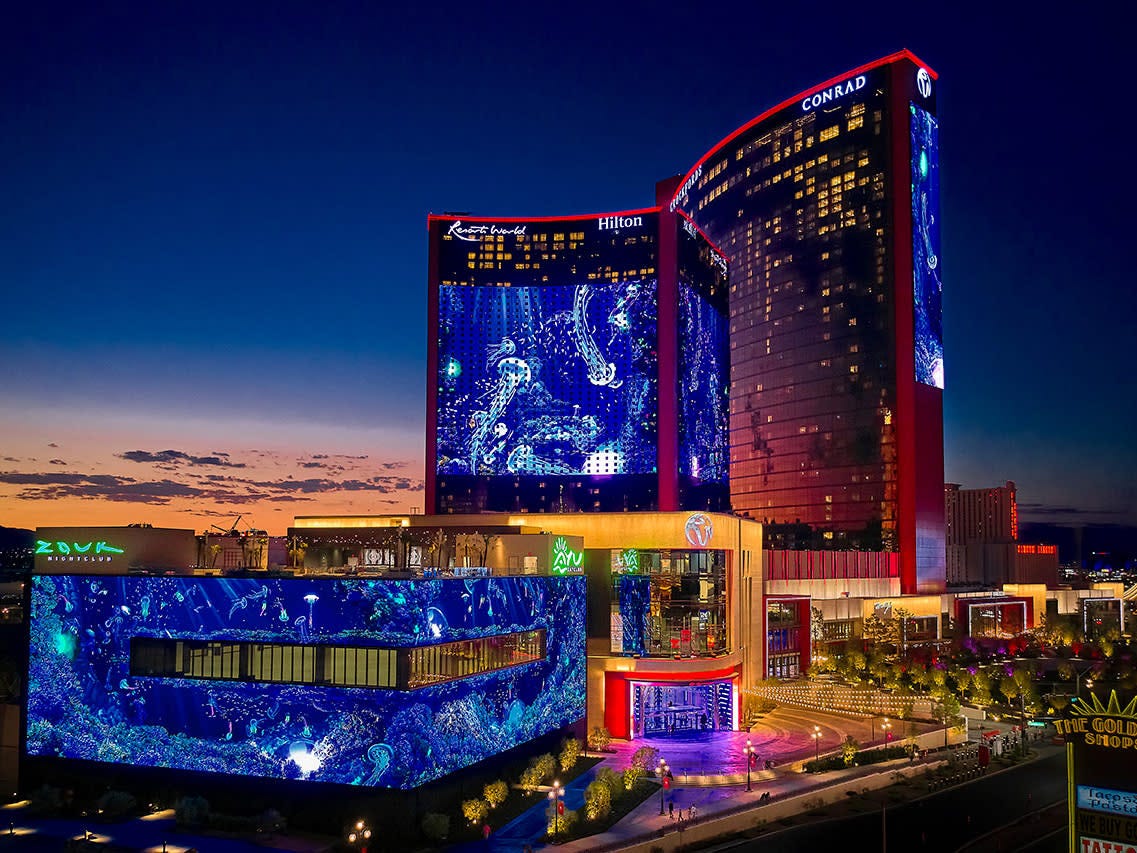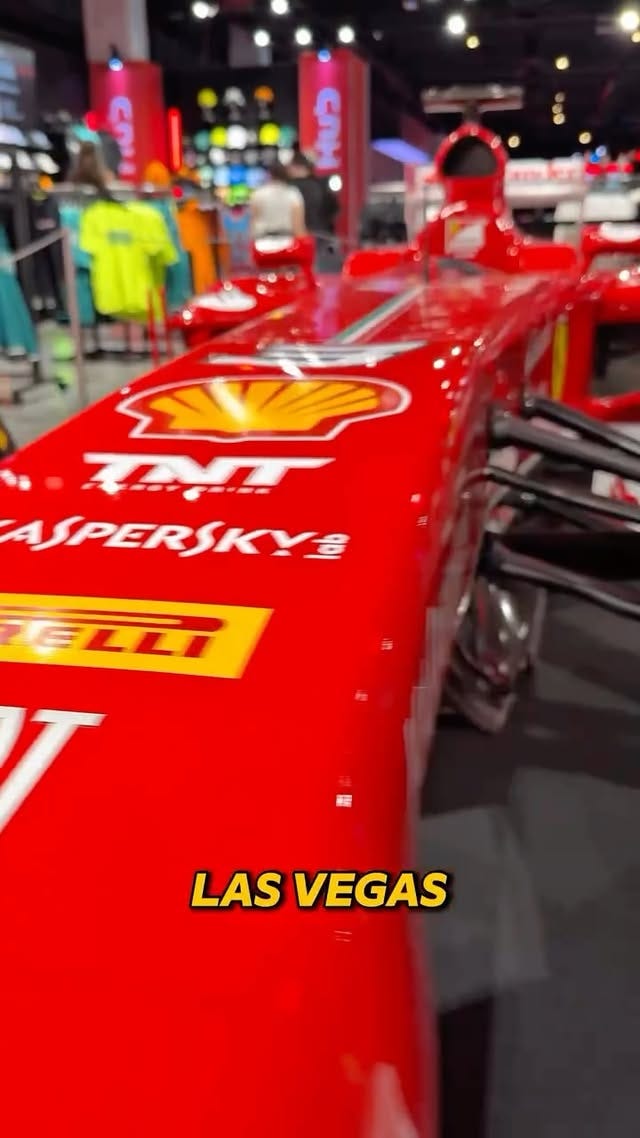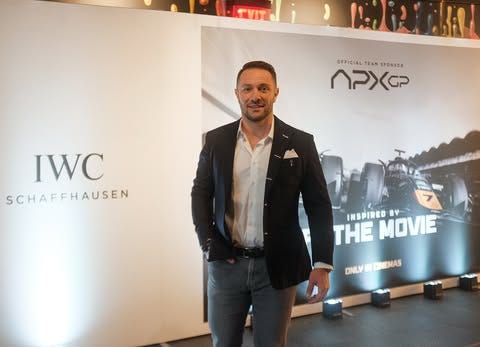95% of Brands Priced Out of F1 Sponsorship—Fan Prix Offers an Alternative
How accessible motorsport events like Fan Prix are democratizing the $2.04 billion F1 sponsorship market
You are receiving this email because you subscribed to Business of Speed, the newsletter for those wanting to stay ahead on what’s happening behind the scenes. I’m Vincenzo Landino, a business, tech, and F1 commentator. I’ve spent the last ten years at the intersection of content, partnerships, and the business of motorsport. This newsletter is where I break down what’s working, what’s shifting, and what’s next without the PR gloss. Thank you for being here.
What’s Happening This Week
Before yesterday, I felt like this would be reasonably quiet after a howler at Silverstone. But with the Horner bombshell, it’s going to be anything but.
Christian Horner OUT at Red Bull; Mekies replaces him as CEO and Team Principal
Lewis Hamilton says he would recommend Mercedes to Verstappen
BMW overtakes Mercedes in Germany’s premium car market for H1 2025
If you've been following the surge in Formula 1's popularity, you're aware that the sport has become a goldmine for brands. But here's the catch: that goldmine comes with a hefty price tag.
In 2024, F1 teams collectively generated $2.04 billion in sponsorship revenue, with the average deal valued at $6.01 million. That's nearly eight times the average NFL sponsorship deal, and it's creating a massive barrier for most companies.
But what can brands do that either want to avoid the exclusivity trap or opt for more accessible, fan-centric options?
That’s where events like Fan Prix come into play.
Scott Becher, Founder of Win-Win Partnerships and partner of Third Man, the agency consortium that created the Fan Prix, says, “Look, F1 absolutely is booming, and if a brand can afford the price of sponsorship admission and activation, it is the most powerful storytelling property in sports.”
The Sky-High Cost of F1 Visibility
Let's start with the numbers, because they tell part of this story. Each of the 10 F1 teams generated an average of $203 million in sponsor dollars last year.
Premium placements? Think $5-7 million for a sidepod logo, or $30-70 million annually for title partnerships with top teams like Mercedes, Red Bull, McLaren, or Ferrari.
Oracle's deal with Red Bull is rumored to be worth $300 million over five years, while Cognizant's tie-up with Aston Martin is estimated to be around $35 million per year.
And that's just the entry fee—activation costs, hospitality, and global travel can easily double the investment.
This isn't random; it's deliberate scarcity. F1 has mastered turning eyeballs into a luxury good. With a global TV audience north of 2 billion, the exposure is unmatched.
However, for 95% of brands, it remains out of reach.
“What about the 95% of brands that can’t afford it? They also have a right to grow their business by sharing the F1 passion with their consumers, customers, and employees!” Becher says.
Mid-tier companies with $5-20 million budgets often get stuck in the "valley of death"—too big for small placements, yet too small for significant impact. Smaller players? Forget it.
The result is a concentrated market where tech giants and luxury brands dominate, leaving everyone else on the sidelines.
The Alternative Playbook
Here's where it gets interesting. While F1 hogs 60% of motorsport sponsorship dollars, alternatives like IndyCar, Formula E, and MotoGP offer massive cost savings—and often better engagement. Take IndyCar, for example: Team sponsorships range from $500,000 to $5 million annually, delivering up to 68% savings compared to F1.
Plus, with 10+ cars vying for wins each race, the competition feels more unpredictable and fan-friendly.
Formula E, the all-electric series, mirrors that affordability with a $500,000-$5 million per team deal, while also incorporating a sustainability angle that's catnip for eco-conscious brands.
Then there's MotoGP, slashing costs by 90% with deals ranging from $1 to $ 15 million, and even some fan-powered micro-sponsorships.
These series enable brands to diversify, target specific regions, and tell stories that extend beyond a quick logo flash.
But the real game-changer?
Events that put fans first, ditching the velvet ropes for genuine interaction.
The Democratization of Motorsport Marketing
Here’s where events like Fan Prix offer an advantage.
Fan Prix launches November 20-22, 2025, right on the Las Vegas Strip. This promises not to be your typical race week fan fest.
According to organizers, the event will feature 25,000 square feet of climate-controlled space, packed with interactive tech demos, driver meet-and-greets, and hospitality experiences.
There’s even a commitment from former F1 driver Romain Grosjean, whose 10 podiums in 179 starts and dramatic 28-second escape from a fiery crash in Bahrain create an emotional hook that's hard to beat.
Brands get a genuine motorsport personality without paying superstar rates. Why does this matter? Fan Prix wants to flip the script on F1's $4-10 million race sponsorship demands.
“That’s why events like Fan Prix really matter. For fans, their entire family can get up close to their favorite sport and drivers without having to take out a second mortgage to pay for tickets", Becher adds. “For brands, they crave authentic environments to tell their story — technology, speed, quality, safety — and we provide that, along with celebrity star power. All at a fraction of the cost of an F1 sponsorship.”
Its Strip location at Resorts World taps into massive foot traffic, offering customizable activations that foster loyalty. Think: Direct fan access, storytelling around Grosjean's survival tale, and no exclusivity barriers. For brands priced out of F1, it's a way to build community without breaking the bank.
Traditional sponsorship metrics, such as exposure, brand equity, and engagement, favor F1's scale. But cost-per-impression often shows diminishing returns for anything but top-tier deals.
Motorsport fans are loyal. They perceive sponsoring brands as more innovative and reliable, which translates to increased purchases.
Events like Fan Prix amplify this by prioritizing connection over visibility. The global motorsports market size, valued at $7.9 billion in 2024, is expected to climb to $18.76 billion by 2033 at a CAGR of 10.07%
Smart strategies include starting small (such as IndyCar or Formula E), diversifying portfolios, and integrating narratives effectively. Fan Prix fits perfectly: Authentic engagement that turns passive viewers into advocates.
Brands can't afford to ignore events like Fan Prix. They deliver superior value through closer fan ties, not just a logo slap.
And if you enjoyed this breakdown, subscribe to Business of Speed for more on the business behind Formula 1 and motorsport. Let's connect the dots. And, if you're a brand eyeing motorsport or looking to get more out of your current motorsport partnership, let’s work together.
Field Notes
I attended a screening of the F1 Movie with IWC and then jumped on a plane to Las Vegas after being invited to check out the Grand Prix Plaza.








